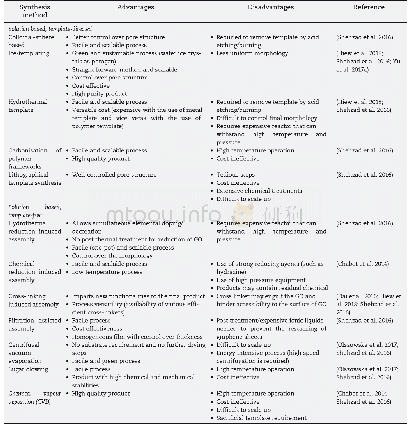《Table 7Advantages and disadvantages of different instrument analysis methods.》
 提示:宽带有限、当前游客访问压缩模式
提示:宽带有限、当前游客访问压缩模式
本系列图表出处文件名:随高清版一同展现
《"Extrinsic harmful residues in Chinese herbal medicines: types,detection, and safety evaluation"》
Once heavy metals and harmful elements are absorbed into the human body,the morphology and valence begin to change.The main forms and valences are reflected in the following three steps.The initial forms are the stable inorganic cation,such as As(Ⅲ)and As(V),Hg(Ⅱ)and Hg(Ⅰ).Then,a stable or unstable complex is formed by an element with a ligand,such as an arsenin protein complex.Afterwards,the elements and carbon covalent link become organic compounds,such as methylmercury,ethylmercury,and dimethylmercury.Analysis of heavy metals and harmful elements in the morphology is helpful for the toxicology study,but these forms are always of trace amounts.Therefore,the analysis faces much more challenges.Luo et al.(2017)and Han,Luo,Zhou,Yang and Yang(2016)explored the arsenic morphology and valence state in vivo after oral administration of Xiao er Zhibao Wan using HPLC-ICP-MS.This study inferred that the toxicity of arsenic was concentration-and time-dependent.The accumulation of dimethylarsinic acid,a byproduct of choline metabolism,was responsible for inducing higher toxicity.The pollution of heavy metals and harmful elements in CHMs has been summarized in Table 8.
| 图表编号 | XD007990200 严禁用于非法目的 |
|---|---|
| 绘制时间 | 2018.04.18 |
| 作者 | Cong-min Liu、Jia-an Qin、Xiao-wen Dou、Mei-hua Yang、Xiao-bo Sun |
| 绘制单位 | Key Laboratory of Bioactive Substances and Resources Utilization of Chinese Herbal Medicines, Ministry of Education, Institute of Medicinal Plant Development, Chinese Academy of Medical Sciences, Peking Union Medical College、Key Laboratory of Bioactive Su |
| 更多格式 | 高清、无水印(增值服务) |
查看“Table 7Advantages and disadvantages of different instrument analysis methods.”的人还看了
-

- Table 5–Summary of the differences,advantages,and disadvantages of different type nanosystems of UA in cancer therapy.




![Table1 Comparing the advantages and disadvantages of photocatalytic system and existing water treatment methods[4, 7, 8]](http://bookimg.mtoou.info/tubiao/gif/SCMA201903002_31900.gif)
